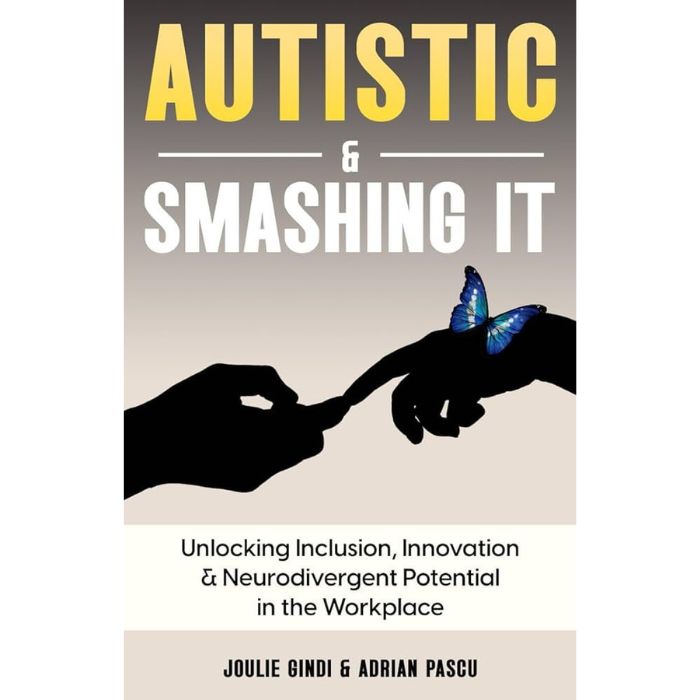It’s the time of year that neurodiversity is on the tip of everyone’s tongue. March celebrates neurodiversity and is quickly followed by Autism Acceptance day, week and month in April. The official statistics in the UK have indicated 1 in 100 people in the UK are autistic, though recent insights suggest this number may be closer to 1 in 50. Meanwhile in the US, Centers for Disease Control and Prevention cite that 1 in 36 children are currently diagnosed with autism (also known as ASD). In reality, these numbers may merely scratch the surface as many individuals remain undiagnosed or unrecognised, particularly among autistic women who often navigate unnoticed beneath the societal radar.
Numerous businesses and organisations are making concerted efforts to foster more inclusive workplaces. This is both laudable and imperative as society increasingly recognises the valuable contribution autistic individuals make in the realm of business and innovation. Since Ernst Young began their Neurodiversity Centres of Excellence, they have seen a £650+ million return on investment and Dell’s neurodiversity programme resulted in neurodivergent employees making significant inroads into efficiency and innovation. However, not all businesses have the kind of resources available to EY and Dell to make improvements in their own inclusion practices.

Autistic and Smashing It by Joulie Gindi and Adrian Pascu is a welcome addition to the information available to businesses, HR departments and L&D professionals trying to make a difference right now. Released in January 2024, this short book is trailed as “the world’s first book about the acceptance of neurodiversity in the corporate world… written by a neurodivergent executive.”
The authors describe the workplace as a place where ‘…autistic people are left at the mercy of their work organisation’s culture, local or national culture, their supervisor’s and coworker’s biases and a plethora of other rules, both spoken and unspoken.’ Their mission, as articulated in Autistic & Smashing It, is ‘to transform misunderstanding and ignorance into understanding, acceptance, and awareness and thus enable more organisations to tap this hidden talent pool and benefit mutually.’
Central to the aim of the book is an exploration of disparate disability models – the medical model and the social model. Historically disability has been viewed through the lens of the medical model, i.e. it views disability as a problem caused by the person’s physical or mental impairment and that the limitations brought about by this impairment is the burden of the individual to treat or manage. In the social disability model, disability is viewed as a social construct, where disability is further shaped by the attitudes and barriers in society. This model recognises the many barriers in place that exclude individuals with disabilities from participating fully in society and the importance of dismantling them to foster inclusion.
The authors argue that the responsibility for accommodating autism has traditionally been seen as the individual’s responsibility and that their success in doing so depends heavily on their ability to mask and ‘fit in’ at the cost of their mental health. The time is well and truly overdue when ‘we need to shift society away from this medical disability model in its attitudes towards autism and transition into a social disability model.’ It’s a powerful argument, successfully delivered throughout the book with the use of examples of personal experiences and moving testament from autistic individuals about their own experiences.
Throughout Autistic & Smashing It the authors supply invaluable insights, such as elucidating the differences between person-first and identity-first language, addressing the obsolescence of the term ‘Aspergers’ as a diagnostic label, explaining concepts such as ‘spiky profiles’ and introducing the framework of support levels – Level 1, 2 & 3 – that gauge the varying needs of autistic individuals. They also debunk common myths about autism and extol the myriad talents that autistic individuals bring to the workplace.
In the latter chapters, the book transitions to practical applications. As the authors acknowledge that ‘a lot of organisations want to be inclusive but simply have no knowledge or experience of how to do that appropriately for those with cognitive diversities’, they wrap up with a list of areas that companies, organisations and L&D departments can use to springboard initiatives that work for them.
Autistic & Smashing It does not offer a prescriptive method that companies can follow step by step to create a more inclusive workplace. It is, however, a useful introduction to the background of understanding of Autism Spectrum Disorder, the many myths and misunderstandings about the condition and the effects environmental and cultural issues can have on autistic and neurodivergent individuals. At the very least, the book is an excellent introduction to these issues that L&D and HR departments can utilise to start or develop the conversation with leaders, managers and teams about fostering inclusion.
*For the purposes of this article we have chosen to use identity first language, as this is the preferred language for the majority of the autistic community.